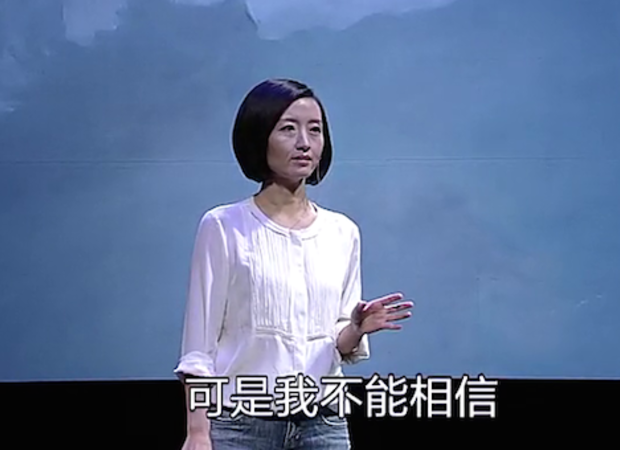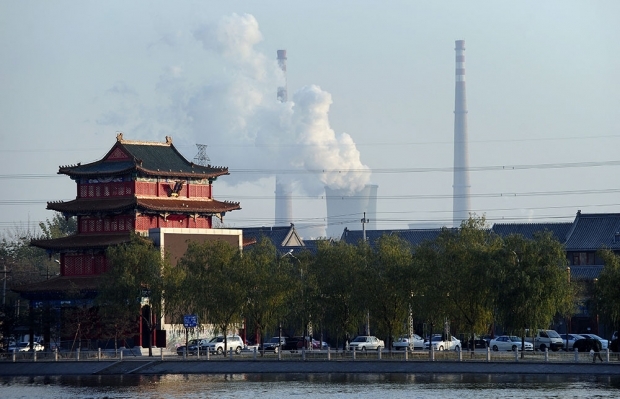China is talking about its pollution problem, but its equally serious class problem remains obscured behind the haze. Smog leapt to the forefront of Chinese national discourse after the February 28 release of "Under the Dome," a 103-minute-long documentary quickly hailed as China’s version of An Inconvenient Truth. In the film, which immediately went viral on social media and garnered 150 million online views within days before being censored, investigative reporter Chai Jing explained the root causes of air pollution that has ravaged so much of China in the past few years. But there’s a sharp class angle to the pollution question that Chai’s documentary did not engage. While smog is the most visible problem afflicting the middle class in mega-cities like Beijing and Shanghai, China’s other half—the rural and poor population—often suffer a nasty pollution paradox: They face health risks from their air and water, but also depend on polluting industries for their livelihoods.
Conversation
03.03.15
Why Has This Environmental Documentary Gone Viral on China’s Internet?
As with many subjects, Chinese social media chatter about pollution reflects a middle-class bias. As of March 6, on Weibo, the popular microblogging platform, a search for the term “smog” yielded more than 197.2 million results, “air pollution” turned up more than 43.9 million, while “water pollution” and “soil pollution” were only mentioned 15.8 million and 3.5 million times, respectively. The latter two are less of a concern for the opinion leaders and ordinary users on China’s social media, most of whom live in cities with water treatment plants and work in jobs unrelated to agriculture. Shocking photos of water pollution in China are not greeted with the same outrage on China’s social media as photos of smog obscuring central Beijing’s Tiananmen Square. Tap water in China is not directly potable, but for the most part urban Chinese don’t think about carcinogens when they turn on the faucet. Occasionally, large Chinese cities have water pollution scares—in April 2014, an oil leak contaminated tap water in Lanzhou, a city of 2.4 million in northwestern China, for example—but supply is usually restored in a matter of days.
Meanwhile, water pollution and soil contamination plague China’s rural population. Zhong Hongjun, a researcher at the Shanghai University of Finance and Economics, wrote on Weibo, “Low-income groups in less developed areas bear most of the cost of water and soil pollution, whereas urban middle class and low income groups share the cost of air pollution.” "Under the Dome" alluded to these problems when it included a short clip of Chai’s 2004 interview with the local environmental protection agency (EPA) director in Shanxi province, who told her that at the time, 88.4 percent of rivers in the province were polluted and 62 percent were no longer useable. In 2014, according to a survey by the national EPA, 60 percent of China’s groundwater was considered “bad” or “very bad.” Villagers who still rely on wells may find their water sources completely contaminated by nearby factories, but have little redress.
Concerns about urban smog have accelerated the relocation of heavy polluters to rural areas, where the local population may be less empowered to resist. For example, in 2005, Shougang, one of China's largest state-owned steel manufacturers, moved its main production facility near the center of Beijing to a small town on Bohai Bay, 150 miles from the capital, in response to worries about air pollution ahead of the 2008 Beijing Olympics. In 2014, large cities like Harbin and Hangzhou shifted factories out of their city centers to alleviate public concerns about smog. In a 2011 report, China’s national EPA highlighted the transfer of heavy pollution from urban centers to rural areas, and admitted that there was insufficient monitoring of pollution in rural areas. The central government announced in November 2014 it plans to deliver safe drinking water to 298 million rural residents in 2015, but experts believe that target might be impossible to meet.
At the same time, worries about urban air have also caused factory closures in rural areas where many peasants work. In early 2014, a local newspaper in Hebei province, where the average disposable income was half that of Beijing’s, reported that the authorities had shut down over 1,200 coal factories and demolished 18 concrete plants to address the smog problem. In Luquan, a small town on the outskirts of Hebei’s provincial capital, 11 companies were shuttered in 2013 and more than 800 low-skilled workers lost their jobs. A man named Zhang Baoshan told a reporter that villagers like him once relied on the concrete plants near their homes to make $300 to $800 a month, but many had since been laid off. On March 2, iLabor.org, a platform dedicated to studying issues related to laborers in China, posted a story of nearly 100 migrant workers being dismissed by a clothing manufacturer in the southern city of Dongguan, without advance notice or remuneration, because of EPA enforcement actions.
At one point in "Under the Dome," Chai showed a map of northern China, with smog from coal-burning industrial plants in Hebei province drifting easily to Beijing. “The air has no walls,” Chai appealed to the audience. “We are all breathing the same air, suffering the same fate.” That’s not entirely true. The experiences of workers at a steel plant in Hebei are decidedly different from those of white-collar office workers in the capital. Chai’s film began a valuable national conversation about air pollution—its dangers, its causes, and its possible solutions. But it left the crucial issue of class almost untouched.




